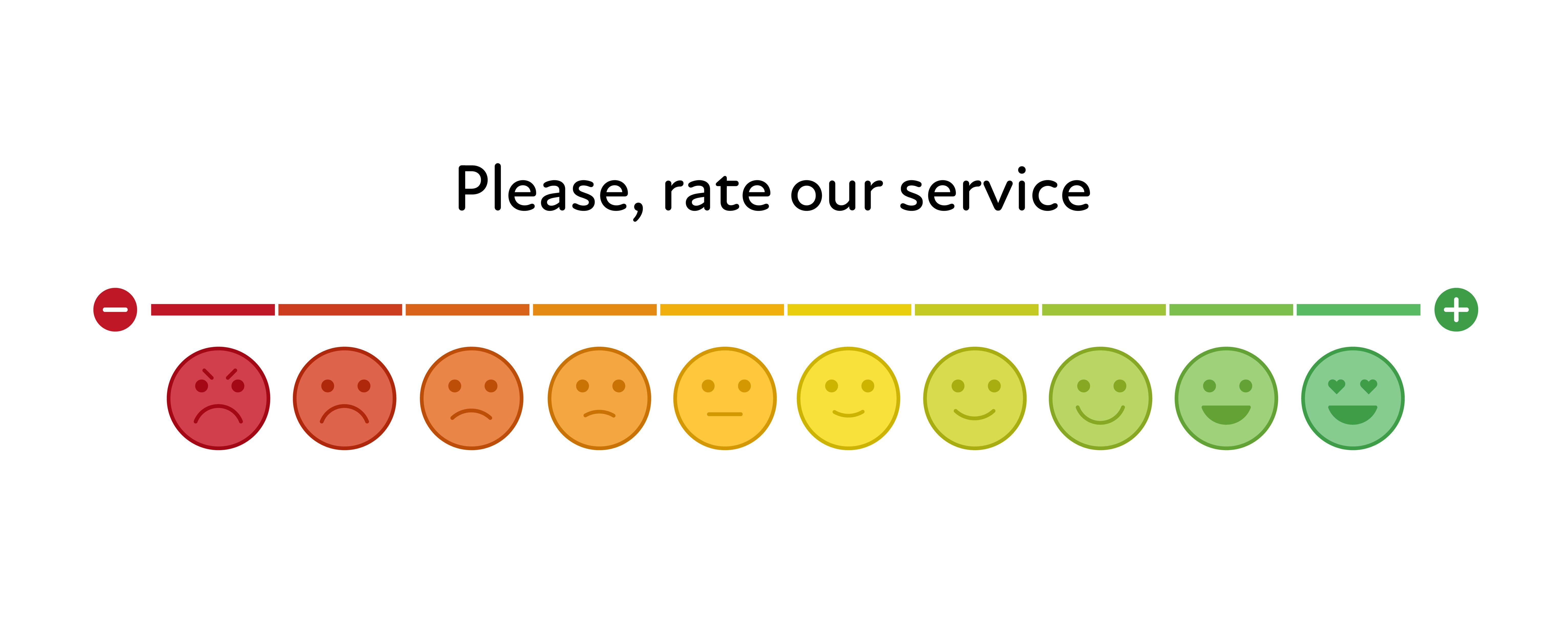Customer Satisfaction Survey Questions - Best Practices

"When planning a survey, it's important to consider what information you're trying to get at and who exactly should be surveyed. A poorly designed (and even well-designed) survey can yield useless information, costing valuable time and money."
Customer satisfaction survey questions are an excellent approach to hear what your consumers have to say about you, your brand, or the goods or services you provide. The number of companies that are using customer satisfaction surveys is on the rise. With many taking advantage of new technologies to enable them to gain customer feedback more quickly and accurately, the amount of data being collected by businesses around the world is growing exponentially.
Yet, most companies forget to ask questions about important aspects such as what they can do to improve their service or why customers aren’t buying from them even though they have a "great" product or service. Also with life after the pandemic, there's, even more, to consider with your customer survey. If your business lost out during the pandemic, your questions will need to focus on fueling repeat customers. And if you have enjoyed a surge for growth during the pandemic, you are hoping to keep that growth going.
Customer satisfaction is a crucial metric. Knowing how your customers feel about you and your products or services can help you make changes to improve customer experience, retain existing customers, and land new ones. Customer loyalty is critical for company growth & profitability yet very few organizations are truly satisfied with their approach to running effective research initiatives.
When planning a survey, it's important to consider what information you're trying to get at and who exactly should be surveyed. A poorly designed (and even well-designed) survey can yield useless information, costing valuable time and money. Survey design is a difficult discipline, and getting it right takes a lot of effort. But, some key principles can make your design much more likely to yield actionable insights.
First, you should know the difference between what different respondents want from your survey. This may seem obvious, but it's important to consider how people will be responding before designing it. If you're struggling to determine who might fill out your survey, start with one of these three descriptions:
- Those whose experience made them feel negative about the brand (e.g., they won't shop there again because they felt poorly treated)
- Those whose experience was positive (e.g., they would recommend this place to others)
- Those who don't have an opinion one way or another (e.g., no strong feeling of positivity or negativity)
Each type of person will need a different kind of survey, as you'll see below.
1. The bad
The Negative Surveyor: This customer has had a negative experience and wants to tell you about it—preferably in excruciating detail. Your priority is to make sure they understand that their feedback is valued and appreciated and their voice is being heard (even if they're not happy with the result). They do not necessarily want something for free; rather, what they want most is an explanation of what went wrong and how the error may be avoided in the future. Examples: "An employee lied about returning my money" or "I've been waiting two weeks for this order. " I need it by Saturday. It's already Wednesday."
2. The "meh"
The Complacent Customer: This customer had a run-of-the-mill experience, neither particularly positive nor negative. They're not looking for a reward, but they may be swayed to buy from you again if the next steps in your survey ask them to rank how important different factors were in their purchasing decision and offer an incentive-based on their ranking (such as a coupon). Examples: "My salad arrived cold" or "I was halfway through my shopping when I remembered what brand of laundry detergent we usually buy"
3. The good
The Hopeful Customer: We all want this person to show up on every survey, though they're not difficult to please. They had a positive experience that stood out in their mind, perhaps it was something unique or innovative that your business did. Examples: "My order arrived ahead of schedule" or "The online shopping experience was smooth and easy."
It's no surprise then the best survey questions usually include a selection of open-ended questions that encourage detail to support each type of customer and their experience. They also include multiple-choice, semantic differential, binary scales, rating scales, or rating scales with open-ended follow-up to dig deeper.
To help you get started, we've compiled a list of questions as well as suggestions on how to ask the right questions along with some top tips from our survey experts.
Types of Customer Satisfaction Survey Questions:
Multiple Choice
Multiple choice is great for customer satisfaction surveys because it is quick and easy to administer and easy for respondents to understand and answer. Multiple choice questions are intuitive, easy to use in different ways, produce easy-to-analyze data and provide mutually exclusive choices.
Multiple choice is best used when:
You want fast feedback from large numbers of customers. When you need both detailed and specific feedback. You are interested in seeing whether or not customers agree with each other on key issues.
Example: 1. What made you decide to go with us instead of a competitor? Product features, Price, Quality of customer service, User experience, Warranty, etc.
Rating Scale Questions
Asking customers how satisfied they were with your product or service is an easy way to gather quick data about their experience. A 5-star scale works best for this type of question.
Rating scale questions are best used:
For quickly gauging overall customer satisfaction. However, if you want more robust data with specific comments, you're better off with an open-end question that asks the customer to summarize their experience in their own words.
Example: How helpful did you find our staff and team? 1 - Not helpful at all, 2 - Barely helpful, 3 - Neither helpful nor unhelpful, 4 - Somewhat helpful, 5 - Very helpful
Open-ended questions
If you'd like more information about the recent product or service purchase, open-ended questions are a great option. They can yield rich data that will help you identify areas of opportunity, as well as specific comments from customers about their experience.
Open-ended questions are best used when:
You're looking for specific customer suggestions or complaints. However, because the answers are not automatically categorized into pre-defined options, it can be very time-consuming to analyze these responses.
Example: Was there anything in your checkout process we could improve? If so, what.

Customer Satisfaction Survey Questions - Best Practices
- Keep Your Survey Short: there is nothing more frustrating to a customer than an overly long survey. You can respect your customer’s time and patience by keeping your survey short. The key here is to ask the right questions, not more questions.
- Make Sure It Fits Your Brand: when conducting Customer Satisfaction Survey Questions, make sure they fit with your company’s image. For example, if your brand comes across as casual and fun-loving, then using overly formalized language in your survey will probably not be well received by customers.
- Make the Survey Mobile Friendly: make sure your survey can be taken on any device or platform, no matter what size screen it has. If possible, make it adaptive--there is nothing worse than trying to answer a question with two words on a tiny smartphone screen of limited width.
- Include Space for Complaints: The best customer satisfaction survey questions are ones that capture both positive and negative feedback. If there is an overlap between good and bad answers, it means you're doing a good job of asking unbiased questions that apply to all customers.
- Act on CX Data with Analytics: If you want the benefit of a smart customer experience reporting platform that reports performance in real-time, learn about The KnowledgeForce Platform and our predictive analytics. This allows you to focus on your customer experience while waiting for the results to be analyzed and delivered for you.
Schedule a demo to see how our CSAT, KnowledgeForce platform and predictive analytics can help you understand the issues causing low customer satisfaction so you can take action before it’s too late.
